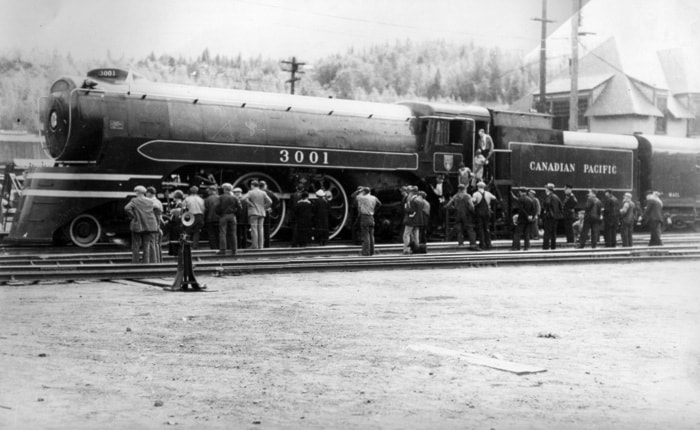Two years after it was first proposed, the idea of restoring passenger rail service between Procter and Nelson remains alive, with funding being sought for a feasibility study.
Kevin Sheppard, an electrical contractor who has been spearheading the initiative, says his model would “use existing infrastructure, spare parts, and the latest technology to create something that will do the job for us.”
He envisions the service running seven days a week from 6 a.m. to midnight, with a 90-minute turnaround and a dozen trips per day. A one-way trip would be 35 minutes — about the same as by car. Based on a community survey, he estimates 500 passengers would ride each week, paying $6 each for an adult round-trip, with some additional freight revenue.
Although this wouldn’t begin to cover the cost of the service, Sheppard notes existing transit is heavily subsidized.
“I think of it this way: what if it cost as much as a new bus and lost as much as a new bus?”
The advantages, he says, would be huge fuel savings, a reduced carbon footprint, and less pressure on the ferry.
He figures the train itself would consist of an old CPR carriage purchased for the price of scrap and repowered with a high-tech electric motor, battery bank, and small generator.
It would perhaps seat 48 and potentially replace the school bus.
The car would have a tower on top and, similar to the ferry, the operator would be able to sit high in the middle and look both ways, so there would be no need to turn it around.
CP Rail would have to provide the crew, Sheppard says.
“We’re not going to be jumping on the track. We’re trying to embrace the union and have their workers, who are already CP safety instructed, as the operator.”
However, he hopes the freight and administration end of things might be done by locals, creating some employment.
The train would stop at three or four places in Harrop and Procter, including the ferry landing and an existing siding near the Procter store. Decommissioned boxcars or cabooses could serve as the business office, freight shed, and maintenance room.
Another, smaller car could be used for personal freight — “where you might put skis or a baby buggy or bicycle” — and house the battery bank and generator. Sheppard anticipates working with hardware, auto parts, and grocery stores in Nelson so they could provide deliveries by rail.
While he’s had preliminary discussions with CP Rail, he says they aren’t sure how to categorize his idea.
“As soon as you talk about commuter, they think high-speed, high-volume units. We’re talking about a single carriage.”
Although the train that presently uses the track is on an erratic schedule, he expects it would be one of the lesser hurdles to overcome.
“I have a feeling that could quite easily become more rational. There’s no reason the train couldn’t be travelling in the same direction in the same time slot.”
Sheppard says he is under no illusions the idea will happen anytime soon: he estimates six to eight years is a realistic timeframe, with the feasibility study taking a year alone.
The Harrop-Procter and Nelson Rail Road committee is applying to the Columbia Basin Trust for funding, and Sheppard also wants to meet with MP Alex Atamanenko to address any federal regulations that might stand in their way.
